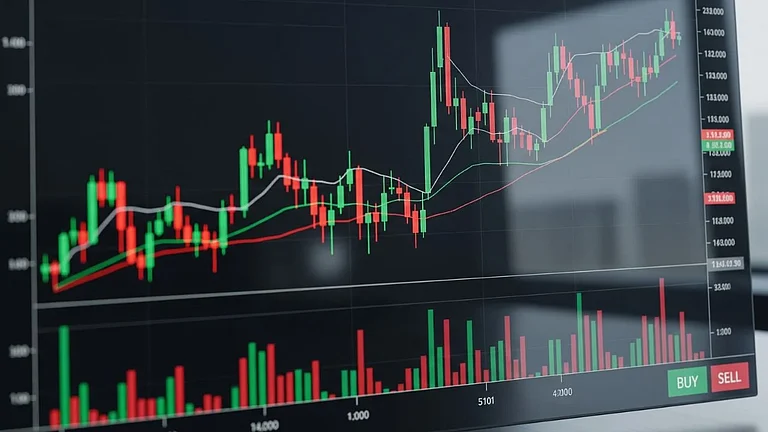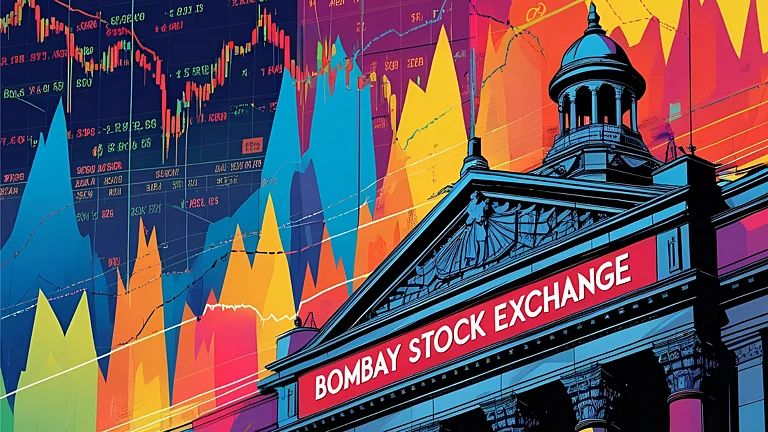
Summary of this article
The industry book for Margin Trading Facility (MTF) has surged to a record high in the first week of August.
Earlier in October 2024, the industry book for MTF reached a record high amid a bull-run in the stock market
Several factors have contributed to the recent surge in MTF usage.
The month of August has been filled with uncertainty. The stock-market too has mirrored the uncertainty with the India VIX surging nearly 4 per cent so far in August. Additionally, US President Donald Trump’s tariff-related threats made the market trade flip-flop. However even as the headline indices traded flip-flop retail investors seem to have expressed a strong desire to participate in the market as the industry book for the Margin Trading Facility surged to an all-time high in August.
As per data sourced from stock screening and market research platform Scan X’s website, the industry MTF book surged to Rs 96,000 crore in the first week of August. On August 7, the MTF industry book was around Rs 91,765.81 crore. In late July, the MTF industry book was around Rs 86,519.7 crore. Earlier in October 2024, the lending under margin trading went up to Rs 80,500 crore, according to the NSE. This surge in MTF lending followed the bull-run on D-street seen towards the end of September as the Nifty hit its all-time high of 26,277.35 on September 27 and the Sensex reached the 85,978.25 mark.
As the amount borrowed using MTF hits new highs, it becomes important to understand what is driving the surge amid a flip-flop market. To understand what’s drawing investors towards MTF, let’s understand how it works:
How Does MTF Work
Margin Trading Facility (MTF) is a facility provided by select brokers that enables investors to purchase stocks when they cannot pay the price at which the stock is traded on the exchanges. Investors are able to buy stocks by paying only a partial price of the stock; the rest of the price is paid by the brokerage. This amount is given to the investor as a loan and interest is also charged on it. Typically, the interest charged to investors who use the MTF facility ranges between 9 and 15 per cent per annum.
If an investor purchases stocks worth Rs 1000 using the MTF facility, they can do so by spending only 20 per cent of the transaction value or Rs 200, on the other hand the Rs 800 will be paid by the broker offering the facility. The broker then earns interest on the amount provided for margin trading. Typically, brokers give a leverage of three to four times the margin amount.
According to the Scan X website, shares of Hindustan Aeronautics Ltd, Tata Motors, and Tata Consultancy Services were the most traded stocks in August using MTF.
Why Is MTF Usage Increasing
Ashish Nanda, Chief Digital Business Officer at Kotak Securities told Outlook Money that investors tend to take leverage positions only when they expect it to rise. He added that in the past four months the benchmark Nifty has rebounded from 21,000 levels to nearly 25,000 levels, which is likely to have spurred hope among investors despite the market trading flip-flop in recent trades.
“Over the years we have seen MTF books growing when markets have risen. Currently, the MTF book has witnessed an increase from 72K to 95K from April to July 2025 on the back of NIFTY going up from 21000 levels to 25000. Investors take leverage positions if they do see opportunities in the market. Needless to say, the book contracts during falling markets, which we have seen in December 2024 to March 2025, where markets corrected from 85000 to 72000 levels,” Nanda said.
MTF’s rising popularity and growing usage also comes amid Securities Exchange Board of India (Sebi) and Finance Ministry’s push to move new investors away from Futures & Options trading. Nanda added that MTF is relatively less risky compared to F&O and is simpler for new investors to comprehend compared to F&O trading which requires understanding of complex concepts.
“I believe MTF is less risky than F&O simply because the risks and rewards are easy to comprehend. Unlike F&O, which requires understanding of the Greeks, time value of money, etc, in MTF, one needs to primarily compare the expected return on the proposed investment with the cost of Borrowing before making an investment decision,” Nanda said.
Another possible reason for the increase in the MTF industry book is the fact that the number of brokers providing the facility has increased in 2025. As the number of brokers providing the facility increases, investors too are gearing up to use the facility.
“I believe the increase in the book is because a lot of digital brokers who were not offering the MTF earlier to their clients have now started offering MTF over the past 3-4 months. They are the ones contributing to the increase in MTF book,” Nanda said.
Pros and Cons of Using MTF For Investing
MTF helps investors by giving them more buying power and helping them use leverage to buy stocks instead of using up their own funds. However, there are several disadvantages of using MTF, if the price of the stock bought via MTF falls, the investor may lose more than what they invested, thus increasing the risk. Additionally, MTF investors have to always keep a minimum balance in their trading account, if the minimum margin requirement increases, they might be asked to deposit more funds. The interest charged on your Borrowing can also reduce your total returns especially if the investment is held for a longer period of time.
Nanda added that investors should use MTF judiciously and take positions only when they have very high conviction regarding the movement of a stock. He also urged investors to use MTF critically and exit MTF if a stock they have invested in using the facility is not performing well.
“MTF is a high-risk, high-reward product. Investors should take MTF positions only when they have high conviction on any stock, they intend to invest in. Secondly, they should ensure that the rate at which they borrow money is the lowest. Lower the interest rate, higher the returns. Thirdly, MTF has to be used tactically. If one thinks that stock is not performing as intended, one should exit MTF immediately. Lastly, one should always ensure that one doesn’t stretch the MTF position to the maximum possible, one should always keep buffer margins in case stock corrects,” Nanda said.
















